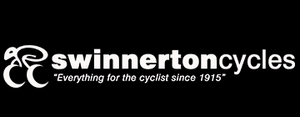Indoor Trainers 1: Rollers
While indoor riding isn’t quite the same as a proper bike ride, sometimes you just don’t have the time or the enthusiasm to wrap up and get outside in winter, then deal with the clean-up afterwards. A quick session on an indoor trainer can be a great way to maintain your fitness and satisfy your cravings during bad weather, so that you can hit the ground running once the weather improves again. We’ll take a look at each type of trainer, and give you a few of our recommendations. This week, it’s Rollers.

What Are Rollers?
Sometimes the simplest solution can be the best. You simply ride your bike on top of three rotating drums, connected together with a belt. The inertia of the spinning wheels keeps you upright, with a little practice. Rollers are a relatively inexpensive and very durable option for indoor training. Entry level models generally feature tapered drums which guide your wheels back towards the middle if you wander off to one side. Higher spec models will generally have flat drums and a much sturdier construction to handle higher cadence efforts. Roller training is great for increasing your cadence and “souplesse” as it rewards a smooth, efficient pedalling style.
Standard rollers are great for interval training, high cadence work and aerobic efforts. They’re not so good for resistance training. Smart rollers can address this to a certain extent, with a small resistance unit allowing you to simulate small gradients. The amount of available resistance is usually quite limited compared with a direct drive trainer, due to the limited grip between the tyre and the rollers. These are quite rare, and expensive enough that it may be worth considering a direct drive trainer instead. While some smart rollers will work to a degree with online training platforms such as Zwift, you won’t get the full experience – most still require you to adjust the resistance yourself.

You might find it helpful to start off using your rollers in a narrow hallway, or next to a sturdy piece of furniture, so that you have something to hold onto while starting off and coming to a stop. An effective workout can be accomplished with just your bike, rollers, and a clock or stopwatch, even better if you have a heart rate monitor. If you want to train on rollers using a GPS-based bike computer such as a Garmin, you’ll need to get a wheel speed sensor. Keep a towel close at hand, and consider training near an open door to keep your temperature under control. Unlike tyre-drive turbo trainers, you don’t need any special tyres to use rollers. However, they are best suited to slick/road tyres – riding with knobbly tyres will make for a very noisy, bumpy and difficult experience.
For a handy guide to starting off on rollers, check out this old video from GCN.
Pros:
Simple and Inexpensive
Compact and lightweight
No additional components or accessories required (except a towel)
Low stress on bike frame and components
Cons:
Only suitable for road or track bikes
Can be pretty soul destroying to ride
Better for cadence and aerobic capacity than power and torque
Our Recommendations:

Entry Level: Tacx Antares
Looking to try rollers for the first time? The Tacx Antares rollers are a great place to start. They’re simple, lightweight and good value, with conical rollers to help keep you on track. For light usage and endurance training, the Antares roller would be a perfectly good option, but for sprint training or intense use, a sturdier model may be preferable. The folding mechanism makes it easy to adjust the rollers to match the wheelbase of different bikes, but also means that you have to set it correctly each time you open them up.

Simple Rollers for Regular Use: Minoura Live Roll R500
Looking to rack up some indoor miles? The Minoura Live Roll R500 rollers are worth a look. Don’t expect any gimmicks or fancy features – these are simple, durable and sturdy rollers which will withstand some heavy usage. Adjusting the wheelbase to suit different bikes requires a spanner and some fiddling about, so if you’re planning to share your rollers with multiple people, the Tacx may be a better choice. For set-and-forget training, the R500 is a solid choice.

Rollers with Resistance: Elite Arion Mag
If you want to add some resistance to your training, you may be better to consider a Smart Turbo Trainer instead – for a small extra outlay, you’ll get a significantly more useful product. However, if you want to train without a power source, or just like the simplicity and flexibility of riding with rollers, we would suggest having a look at the Elite Arion Mag rollers. They’re a sturdy set of rollers with a 3-step magnetic resistance unit, manually controlled via a rocker switch; you’ll need to get on and off the bike to adjust the resistance.

Smart Rollers: Elite Nero Smart B+ FE-C
If you’re planning to use training software like Zwift, you might be best to consider a Smart Turbo Trainer instead. However if you have your heart set on rollers, the Nero Smart is a good way to go. The Nero is a “Floating” roller (like the Tacx Galaxia) – the roller frame can rock back and forth slightly to absorb small imperfections in your pedal stroke, making the ride feel much smoother. Nero rollers can simulate up to a 6% gradient, and can be controlled by FE-C compatible software such as Zwift, allowing you to follow training programs or follow routes. A great training tool, but not great if you plan on any e-sports racing.
